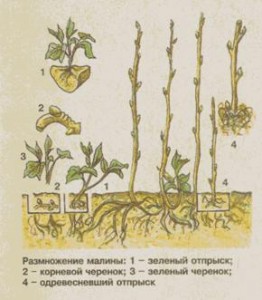
- propagation by root suckers
- propagation by root cuttings
You can also use propagation by green cuttings, but this is a rather complicated method. For beginner gardeners, the first two are more suitable.
Reproduction of remontant raspberries by root suckers
The easiest way to propagate raspberries is by root suckers. In remontant raspberries, unlike ordinary summer raspberries, such offspring occur relatively little. But nevertheless they exist. If it is necessary to increase the amount of planting material, proceed as follows. In autumn or spring, the central part of the rhizome is cut down with a shovel from the raspberry bush. And then a lot of shoots are formed from the roots remaining in the ground, which are used as planting material. In this way, not only remontant raspberries are propagated, but also any other.
The same technique is used to rejuvenate the plantation. After all, raspberries should be grown in one place for 10-15 years. Then the yields begin to fall and it is recommended to move the raspberry plant to another place. But this comes with a number of difficulties. First of all the question arises how to remove raspberries from the area where she grew up. All these problems can be avoided if you rejuvenate the plantation from time to time.
To propagate raspberries, root suckers are used both in early summer and autumn. Autumn offspring take root better. For planting, you should choose shoots with a well-developed root system and a powerful stem. When planting, make sure that the root is straightened and not wrapped anywhere. It is better to cut off the top of the shoot and leave a stem 30-40 cm high.
But in order to get well-developed and rooted shoots, you will have to come to terms with the fact that they will grow along with the main bushes all summer. This will create excessive thickening, which will not have a very good effect on the harvest. To avoid this, it is better to plant such seedlings in early summer.
At this time, all unnecessary shoots are usually removed. Some of them can be carefully dug up with a clod of earth and transplanted either into schools for growing or to a permanent place. But then the seedlings will have to be watered frequently and be sure to be shaded from the sun. It’s even better if you build a small greenhouse above them. But if you are lucky and the weather is cloudy, you can do without it.
Propagation of raspberries by root cuttings
In addition to green shoots, root cuttings are often used to propagate remontant raspberries. To do this, you need to dig up raspberry roots in the fall and cut them 10-15 cm long. The thickness of the roots should be 2 mm. and more. Such cuttings are usually immediately planted in a permanent place. They must be planted horizontally to a depth of 7-8 cm. Afterwards, be sure to water them and cover them with something in the winter.
The planting of cuttings is sometimes carried out until spring. In order for them to overwinter well, they must be sprinkled with wet sawdust and placed in the cellar. If you postpone planting to spring, you will have the opportunity to increase the number of planting materials. It’s just that several growth buds will awaken on each root in the spring. By dividing the cuttings into parts according to the number of awakened buds, you will increase the number of seedlings many times over. Of course, such small sprouts must first be planted in boxes or pots. And when they grow up, plant them in the ground.
Reproduction of remontant raspberries is sometimes carried out by dividing the bush, but practically no one uses this method.
YOU CAN ALSO READ:
- Propagation of roses by cuttings
- Planting remontant raspberries
- How to remove raspberries
- Black raspberry planting and care
- How to feed cucumbers
- Carrot planting dates
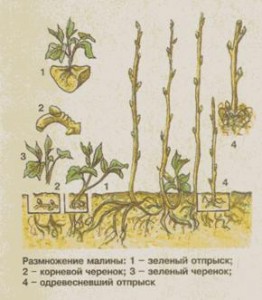
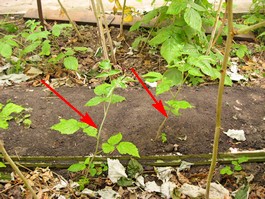
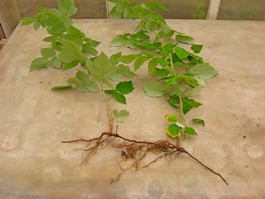

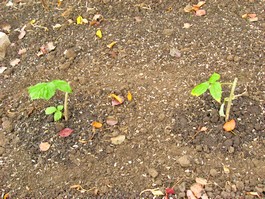
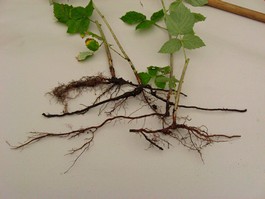



 (8 ratings, average: 3,88 out of 5)
(8 ratings, average: 3,88 out of 5) CUCUMBERS NEVER GET SICK, I'VE BEEN USING ONLY THIS FOR 40 YEARS! I SHARE A SECRET WITH YOU, CUCUMBERS ARE LIKE THE PICTURE!
CUCUMBERS NEVER GET SICK, I'VE BEEN USING ONLY THIS FOR 40 YEARS! I SHARE A SECRET WITH YOU, CUCUMBERS ARE LIKE THE PICTURE! You can dig a bucket of potatoes from each bush. Do you think these are fairy tales? Watch the video
You can dig a bucket of potatoes from each bush. Do you think these are fairy tales? Watch the video
 How our fellow gardeners work in Korea. There is a lot to learn and just fun to watch.
How our fellow gardeners work in Korea. There is a lot to learn and just fun to watch. Eye trainer. The author claims that with daily viewing, vision is restored. They don't charge money for views.
Eye trainer. The author claims that with daily viewing, vision is restored. They don't charge money for views. A 3-ingredient cake recipe in 30 minutes is better than Napoleon. Simple and very tasty.
A 3-ingredient cake recipe in 30 minutes is better than Napoleon. Simple and very tasty. Therapeutic exercises for cervical osteochondrosis. A complete set of exercises.
Therapeutic exercises for cervical osteochondrosis. A complete set of exercises. Which indoor plants match your zodiac sign?
Which indoor plants match your zodiac sign? What about them? Excursion to German dachas.
What about them? Excursion to German dachas.
In a word, the propagation of remontant raspberries is no different from the propagation of ordinary raspberries. Dug up the shoots and plant them in a new place.
It takes a very long time to propagate raspberries from root cuttings. This method is only suitable for propagating some elite varieties.
Or when a lot of planting material is required, for example for sale.